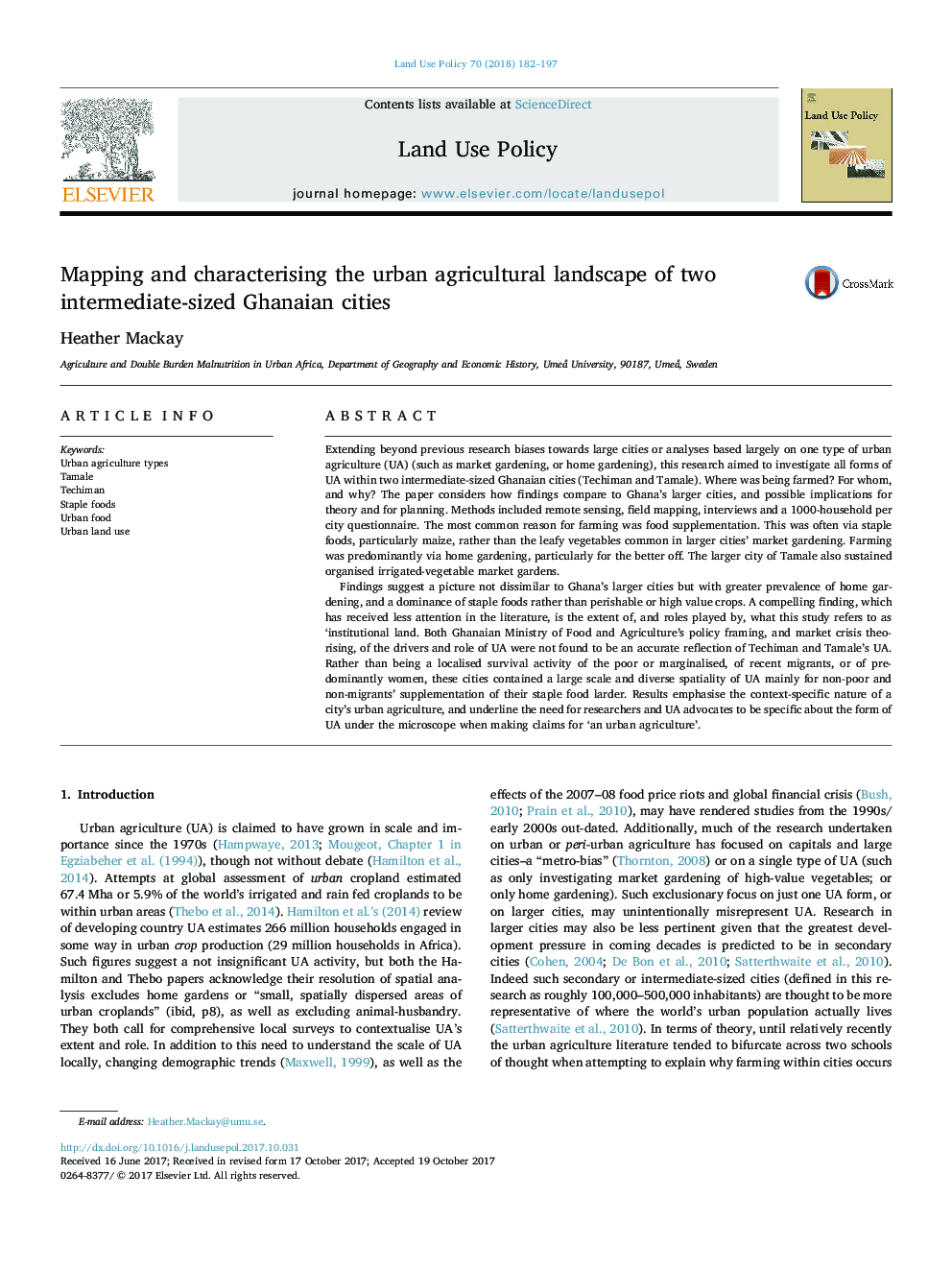| Article ID | Journal | Published Year | Pages | File Type |
|---|---|---|---|---|
| 6546740 | Land Use Policy | 2018 | 16 Pages |
Abstract
Findings suggest a picture not dissimilar to Ghana's larger cities but with greater prevalence of home gardening, and a dominance of staple foods rather than perishable or high value crops. A compelling finding, which has received less attention in the literature, is the extent of, and roles played by, what this study refers to as 'institutional land. Both Ghanaian Ministry of Food and Agriculture's policy framing, and market crisis theorising, of the drivers and role of UA were not found to be an accurate reflection of Techiman and Tamale's UA. Rather than being a localised survival activity of the poor or marginalised, of recent migrants, or of predominantly women, these cities contained a large scale and diverse spatiality of UA mainly for non-poor and non-migrants' supplementation of their staple food larder. Results emphasise the context-specific nature of a city's urban agriculture, and underline the need for researchers and UA advocates to be specific about the form of UA under the microscope when making claims for 'an urban agriculture'.
Keywords
Related Topics
Life Sciences
Agricultural and Biological Sciences
Forestry
Authors
Heather Mackay,
